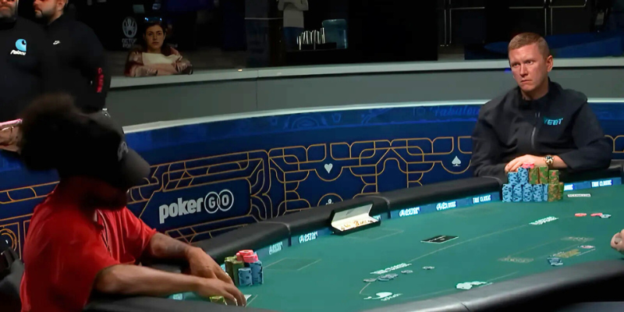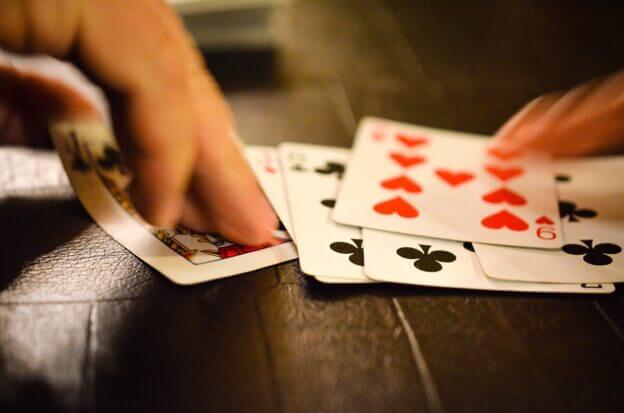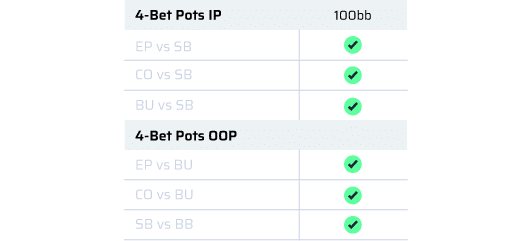Knowing when you should fold in poker is a crucial part of your game.
Folding is part of a balanced approach.
When I started learning about game theory, it felt like I would focus on calling and raising the right frequencies. I started to realize if I wanted to play a balanced strategy, I should also be folding the right frequencies.
Most people will end up over-folding a lot of spots, sometimes for good reason, sometimes because we don’t know better. The big problem is that people construct their ranges very poorly and they end up folding the wrong hands.
If we construct our range in a solid way, we allow ourselves to fold marginal hands. In this article, I want to shed some light on what hands to fold and what situations so we can stop worrying about over-folding or being exploited.
Thinking Ahead
One core concept when it comes to folding, or just to poker in general, is that playability and blockers are more important than raw equity (or absolute hand strength).
Very often we prefer having a small chance to improve, and then value bet on later streets over a hand that has a decent absolute hand strength but no playability.
A very good indicator when deciding whether to continue or not, and it is true for pre-flop, flop and turn, is how often will you be able to value bet your hand on later streets, and you can already think about this pre-flop.
Think about how often you would get into a spot where you actually make your hand and are able to value bet. It’s quite likely that you will get raised off your hand at some point, or an unfortunate runout is going to hit where you can’t continue.
Folding Pre-Flop
Preflop is the simplest street to play, it’s the easiest street to study, but it’s the most important street to study. That relationship between how important it is and how difficult it is to study changes the further you progress in the game tree.
It’s important to get your frequencies right. With the exception of the Small and Big Blind, the first thing we can really do preflop is raise or fold. Having the correct open frequencies basically means having the correct folding frequencies.
The following chart refers to simplified preflop folding frequencies for PLO500. In this case we are assuming previous positions have folded beforehand.
FOLDING FREQUENCIES
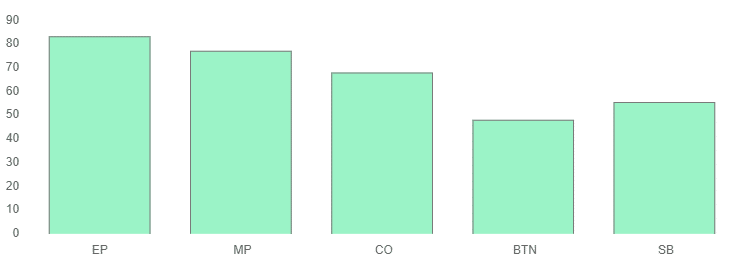
Lower stakes should play a bit tighter, and higher stakes a bit looser, due to the difference in rake. And needless to say, your folding frequency will generally be much higher on a raised pot.
Shorter stack sizes and having positional disadvantage are good indicators to play tighter and increase your folding range. If you’re not familiar with these ranges, study frequencies by using a preflop tool like PLO Trainer.
Folding on the Flop
The flop is a little more difficult to play, but a little less important compared to pre-flop, and then the river is very complex to play, and probably the least important to study because you only get to the river a small amount of time.
Basically, you can make and argument for folding the weakest version of any draw, especially if you think your opponent is under-bluffing, or betting too value heavy.
Blockers and playability heavily influence our decision to fold on the flop. Playability, like having backdoor draws and blockers, can be a good reason to continue in certain spots.
When it comes to folding post-flop, as well as in pre-flop, having a pocket pair in your hand very often decreases your playability and it makes you want to fold your hand more often if you can’t use it as a bluff because you’re holding blockers.
In Position
The weakest draws can be considered to fold, especially when you think that your opponent is c-betting a little bit too strong.
Very often people do a poor job of constructing their ranges and what will happen is they will find the check-folds after checking, but the problem is they are not checking enough strong hands to protect their check-folding range. And maybe some of the hands they are supposed to end up check-folding they end up betting.
People will over c-bet out of position, and then their checking range becomes very poor and they end up check-folding a lot. They are check-folding the right hands, but since they don’t have those strong hands in their checking range, they end up check-folding a lot of the time, becoming easily exploited.
Out of Position
First of all, opening a very small percentage (like %12) is not worth it, as it could overcomplicate your strategy. So, when this is the case, it might be good to instead check your entire range.
By checking more, you strengthen our range. And, because we have some added slow plays now, we are allowed to fold even a little bit more on the flop. We don’t need to continue with the very marginal hands.
You need to watch out for c-betting in single-raised pots out of position. In 3-bet pots, people tend to bet too many of their value hands on the flop as a c-bet, and then they are check-folding too many hands. They are betting too many strong hands and their check-folding range becomes super weak.
Conclusion to When to Fold in Poker
Having solid ranges enables folding, enables aggression, enables really everything for us. So be aware of how to construct your range.
By knowing which hands to check and which hands to bet and you will have a way easier time just folding the weaker hands on the flop.
And, always remember that when deciding whether or not to fold, playability and blockers are very important.




